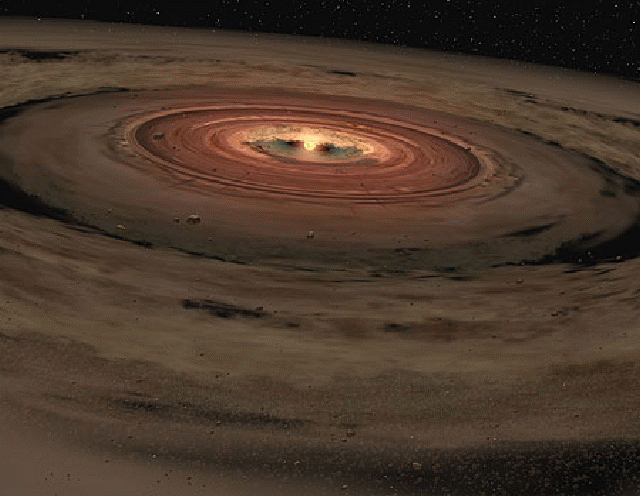The solar system started out as a massive rotating molecular cloud of dust and gas - the dust a mixture of silicates, hydrocarbons and ices; the gas was mostly hydrogen and helium. Such clouds exist throughout the Universe. Over time gravity caused the cloud to contract, and conservation of angular momentum meant the contraction was onto a thick disc shape. Most of the matter was pulled over time to the centre by gravity. The gravitational energy turned into heat.The temperature rose high enough for nuclear reactions to start in the core of the Sun, with hydrogen fusing to become helium.

Planets in the nebula hypothesis formed through dust particles in the disk clumping into progressively larger units to become planetesimals, the size of present-day moons. Close to the Sun, where it was warmer and solar winds had driven away most of the gas, the rocky cores continued to gather bulk until they exhausted the space around them and became full-grown terrestrial planets. Further out,where it was colder, gravity attracted the more volatile elements to form the gaseous and icy planets.
The planets can be divided into three types, corresponding to their distance from the Sun: the terrestrial or rocky planets Mercury, Venus, Earth and Mars, the gaseous planets Jupiter and Saturn – most of the planetary mass - and the icy planets Uranus and Neptune. In addition there is a belt of asteroids between Mars and Jupiter, smaller groups of asteroids in various other parts of the solar system, and an array of icy ‘trans-Neptunian objects ’,principally those that make up the Kuiper Belt on the edge of the solar system. The most famous of the TNOs is Pluto, recently demoted to a dwarf planet.
